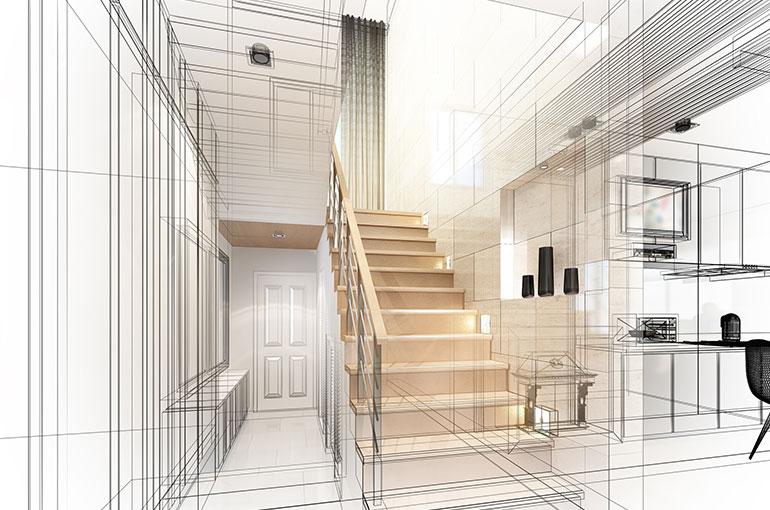The Impact of Technical Innovations on the Layout Practices of Contemporary Architects
The quick evolution of technological devices has significantly reshaped the style landscape for modern designers, promoting unmatched degrees of technology and sustainability. The combination of Structure Info Modeling (BIM), parametric design, and artificial intelligence has not only streamlined collaboration among varied groups but also redefined task implementation. As engineers welcome these developments, they are confronted with complicated difficulties that might influence their innovative procedures. Exploring these dynamics reveals a nuanced interaction in between innovation and typical design techniques, prompting a better evaluation of what the future holds for building practices.
Development of Architectural Devices
Exactly how have architectural tools transformed the design and building and construction procedures over the centuries? The advancement of architectural devices has actually considerably affected the effectiveness, accuracy, and creative thinking of layout and building.
With the development of the Renaissance, the introduction of the compass and the protractor noted a crucial change. These devices allowed architects to achieve better accuracy in their designs, promoting the introduction of more intricate and in proportion structures. The Industrial Transformation additionally transformed building experiment the introduction of mechanized tools and materials, enabling bigger and more enthusiastic jobs.
In the 20th century, the development of computer-aided design (CAD) software application transformed the landscape once more, offering architects with unprecedented capabilities in modeling and visualization. Today, progressed tools such as Building Information Modeling (BIM) and parametric layout software program continue to push the borders of architectural technology, enabling a more integrated strategy to layout and building procedures.
Improved Cooperation in Design
As modern technology continues to progress, boosted collaboration in style has actually become a foundation of modern-day architectural method. The assimilation of digital tools such as Structure Info Modeling (BIM), cloud-based systems, and advanced visualization software application has actually changed the way designers, designers, and stakeholders interact throughout the design procedure. These tools assist in real-time interaction, allowing teams to share ideas, adjustments, and responses quickly, despite geographical place.

Additionally, interdisciplinary cooperation has actually been streamlined through these technical innovations, allowing engineers to function extra closely with other professionals, such as city coordinators and ecological professionals. The result is a more natural technique to develop that considers numerous viewpoints and experience. Eventually, enhanced collaboration in layout is not simply a trend; it is crucial for producing innovative, useful, and aesthetically pleasing design in an increasingly intricate world.
Sustainability With Modern Technology
Sustainability in architecture has significantly become intertwined with technical development, driving the market towards environmentally responsible methods - cda architects. Contemporary engineers are leveraging advanced site here technologies to lessen environmental impact while improving the performance of structures. One popular instance is using Structure Information Modeling (BIM), which enables for specific planning and resource allotment, minimizing waste throughout building and construction and advertising energy efficiency throughout a building's lifecycle
Additionally, clever products and energy-efficient systems are being incorporated right into layouts to maximize source use. Technologies such as solar batteries and environment-friendly roof harness renewable resource sources, contributing to decreased carbon footprints. Additionally, the application of expert system in design procedures makes it possible for engineers to simulate and analyze power intake, leading choices towards more sustainable outcomes.
The assimilation of lasting modern technologies not just lines up with worldwide environmental objectives yet likewise satisfies an enhancing demand from customers for environmentally friendly solutions. As engineers welcome these advancements, the focus shifts in the direction of developing areas that are not only cosmetically pleasing yet likewise functionally sustainable, therefore redefining the requirements of contemporary architecture. This way, innovation works as a catalyst for sustainability, allowing architects to design structures that respect and boost the natural surroundings.
Obstacles in Application
While technical improvements in design hold fantastic promise for improving sustainability, their implementation usually comes across significant difficulties - cda architects. One primary challenge is the steep understanding curve linked with new modern technologies. Architects and building and construction experts might require substantial training to efficiently utilize sophisticated software program and tools, which can postpone task timelines and enhance prices
Additionally, the combination of arising innovations, such as Building Info Modeling (BIM) and lasting products, usually demands partnership throughout multidisciplinary Look At This groups. This partnership can be prevented by distinctions in competence, operations, and communication styles, causing possible conflicts and inefficiencies.
Financial restrictions better complicate the adoption of ingenious innovations. Several building firms, particularly smaller ones, may lack the sources to buy sophisticated tools, limiting their ability to compete with larger firms that can pay for such financial investments.
Moreover, regulative frameworks and structure codes might not equal technical innovations, developing ambiguity and potential compliance issues. This challenge can dissuade designers from completely embracing new technologies, as the risk of non-compliance might surpass the advantages. Dealing with these execution obstacles is critical for the effective assimilation of technological developments in contemporary building techniques.
Future Trends in Design
The difficulties associated with the implementation of brand-new innovations in architecture have actually triggered a reevaluation of future trends within the market. As designers navigate concerns such as sustainability, urbanization, and social equity, they are significantly embracing innovative innovations to improve layout effectiveness and environmental efficiency.
One noticeable fad is the integration of expert system (AI) in the design process. AI tools can examine vast datasets to educate design choices, boosting both imagination and functionality. Building Info Modeling (BIM) proceeds to develop, making it possible for real-time collaboration amongst stakeholders and promoting streamlined project monitoring.
Sustainable style techniques are also acquiring energy, with architects click to read concentrating on adaptive reuse and regenerative layout concepts that minimize resource intake and waste. The incorporation of smart materials and eco-friendly power sources will additionally boost the strength of structures despite climate change.

Final Thought
Technical developments have actually substantially improved architectural layout practices, promoting enhanced accuracy, partnership, and sustainability. The integration of tools such as Structure Information Modeling and parametric style software program, together with fabricated intelligence and wise products, equips engineers to address intricate challenges much more properly.